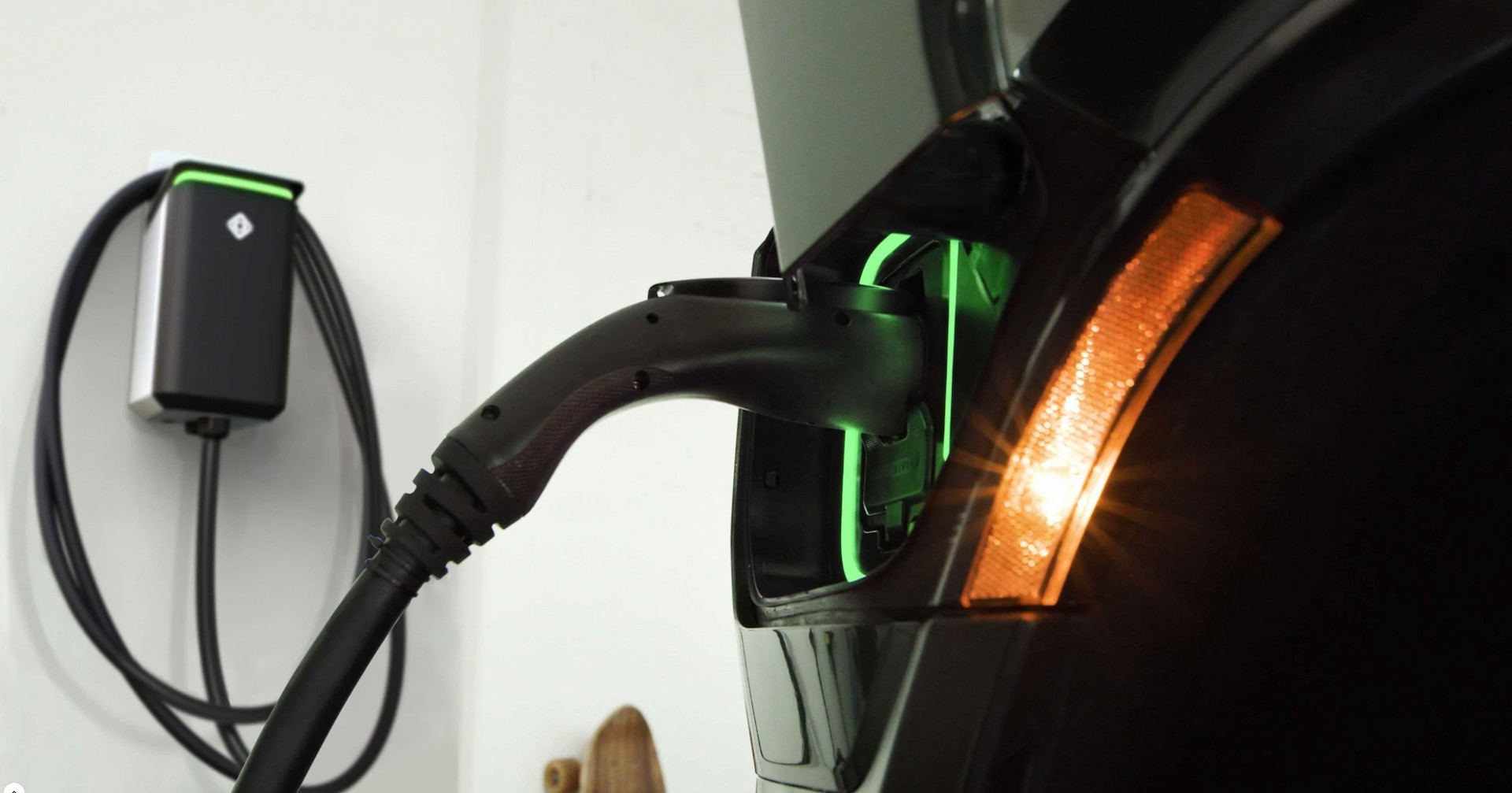
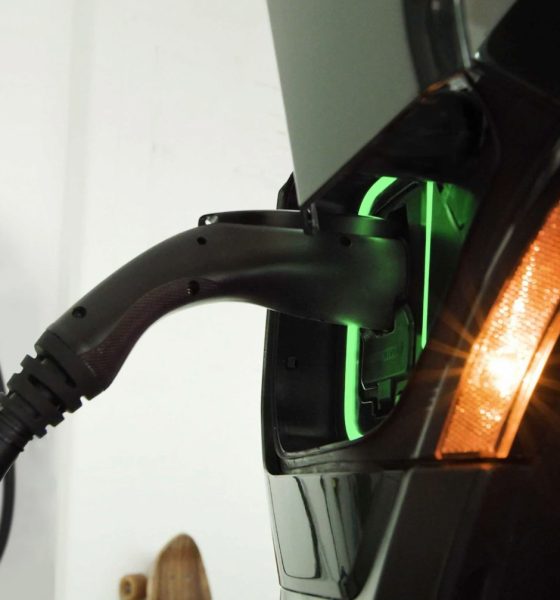
News
Rivian reveals the Adventure Network: 3,500 fast chargers, 600 sites by 2023
Rivian has officially revealed its charging infrastructure, known as the Adventure Network, in North America, and it’s pretty impressive. The automaker released a detailed map with all of its planned charging locations throughout the United States and Canada, featuring more than 3,500 fast chargers capable of 200 kW charging rates at 600 locations across the North American market by 2023. Some of the more traveled routes will have charging stations available on them later this year, the company said.
The Adventure Network will allow convenience, speed, and efficiency for Rivian owners as they begin to accept deliveries of either the R1T all-electric pickup or R1S all-electric SUV later this year. Rivian states that its charging infrastructure, much like Tesla’s, will be exclusive to owners. 140 miles of range will be available after just 20 minutes of charge time for either of its vehicles. Additionally, in-vehicle navigation systems will eliminate any questions or concerns by planning each stop along the route to the ultimate destination.
The Rivian Adventure Network is bringing DC fast charging to routes across the US and Canada — like along California’s Hwy 395 — with over 3,500 fast chargers at more than 600 sites by end of 2023. Visit our blog for details on all our charging solutions. https://t.co/nKBAZyeN7k pic.twitter.com/LuoTpgRATb
— Rivian (@Rivian) March 18, 2021
The charging infrastructure will also be powered by 100% renewable energy, making Rivian’s vehicles some of the most sustainable during the vehicle’s lifespan. Rivian has established partnerships with electricity providers and plans to utilize wind and solar energy to keep its infrastructure up and running. The automaker also said it would use Renewable Energy Certificates to ensure the car is powered by clean electricity.
Rivian’s strategy for rolling out the Adventure Network was simple: create fast charging options for owners so they can continue their adventures without spending too much time sitting in a charging stall. Rivian also strategically placed each charger along highly-popular routes and will be available later this year.
The company wrote:
“Los Angeles to Tahoe. Manhattan to the Adirondacks. San Francisco to Seattle. I-70 to The Rockies. Michigan’s UP via I-75. California’s Hwy 395. The entire Blue Ridge Parkway from Shenandoah National Park down to Great Smoky Mountains National Park. All these routes and more will begin opening this year.”
Rivian’s planned charging network will bring more than 3,500 charging stalls in at least 600 locations across the United States and Canada by 2023. (Credit: Rivian)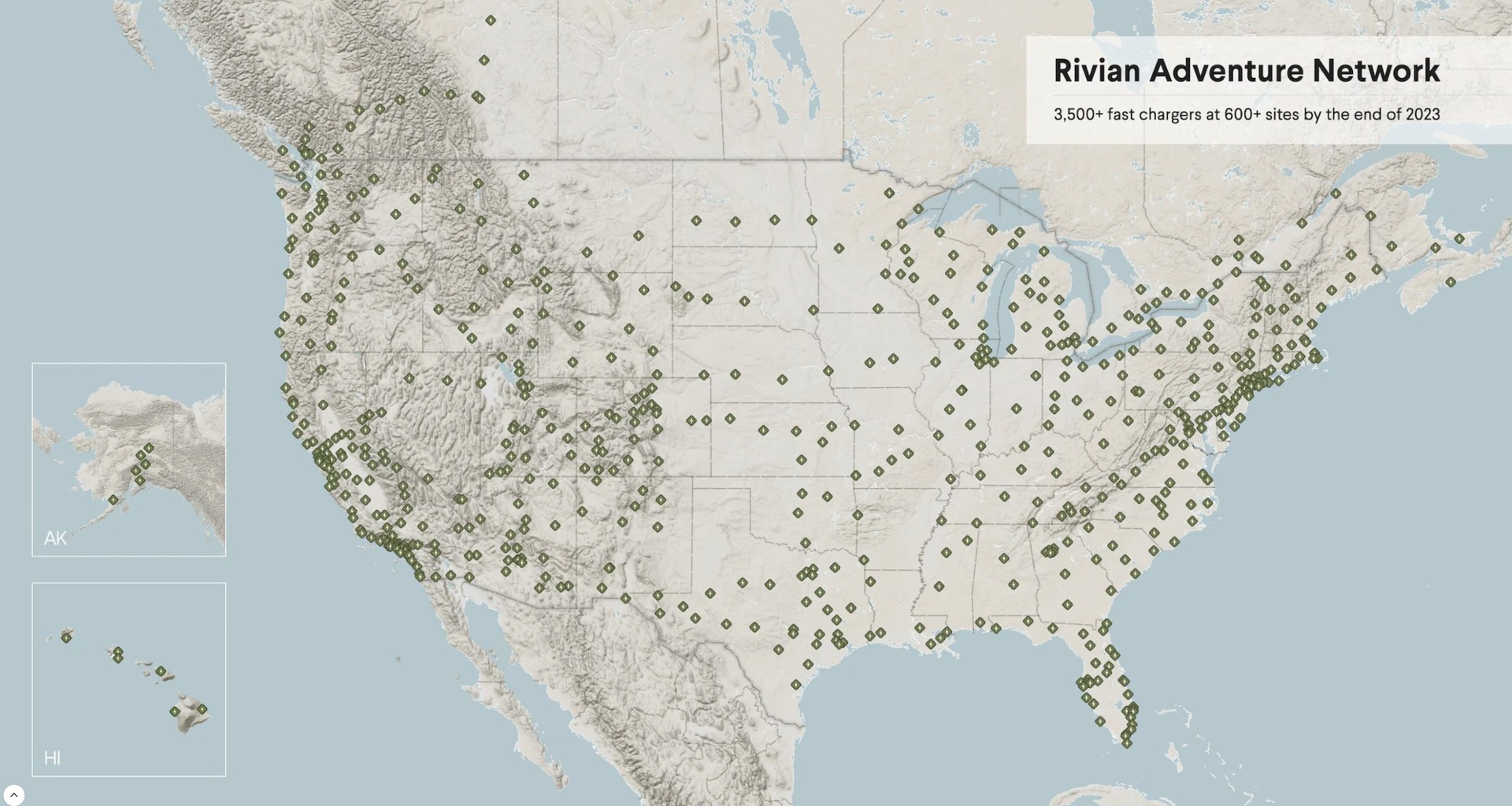
With an initial charging rate of 200 kW, Rivian plans to upgrade the sites to 300+ kW rates in the future. If accomplished, Rivian will have installed some of the most powerful electric vehicle chargers in the world, surpassing Tesla’s V3 Supercharger that operates at peak rates of 250 kW and provides up to 1,000 miles of range per hour.
To further solidify the availability of charging points throughout the region, Rivian is installing over 10,000 low-output Waypoint chargers available at shops, restaurants, hotels, parks, and other points of interest. The chargers will equip the standard J1772 plug and will be available for public use with any compatible vehicles. An 11.5 kW rate will charge the vehicle slowly but surely, as Rivian’s Smartphone application will give owners up-to-the-minute updates regarding their vehicle’s state of charge.
Rivian plans to begin delivering the R1T pickup in July, while the R1S will make its way to customers starting August 2021.

News
Tesla is not sparing any expense in ensuring the Cybercab is safe
Images shared by the longtime watcher showed 16 Cybercab prototypes parked near Giga Texas’ dedicated crash test facility.
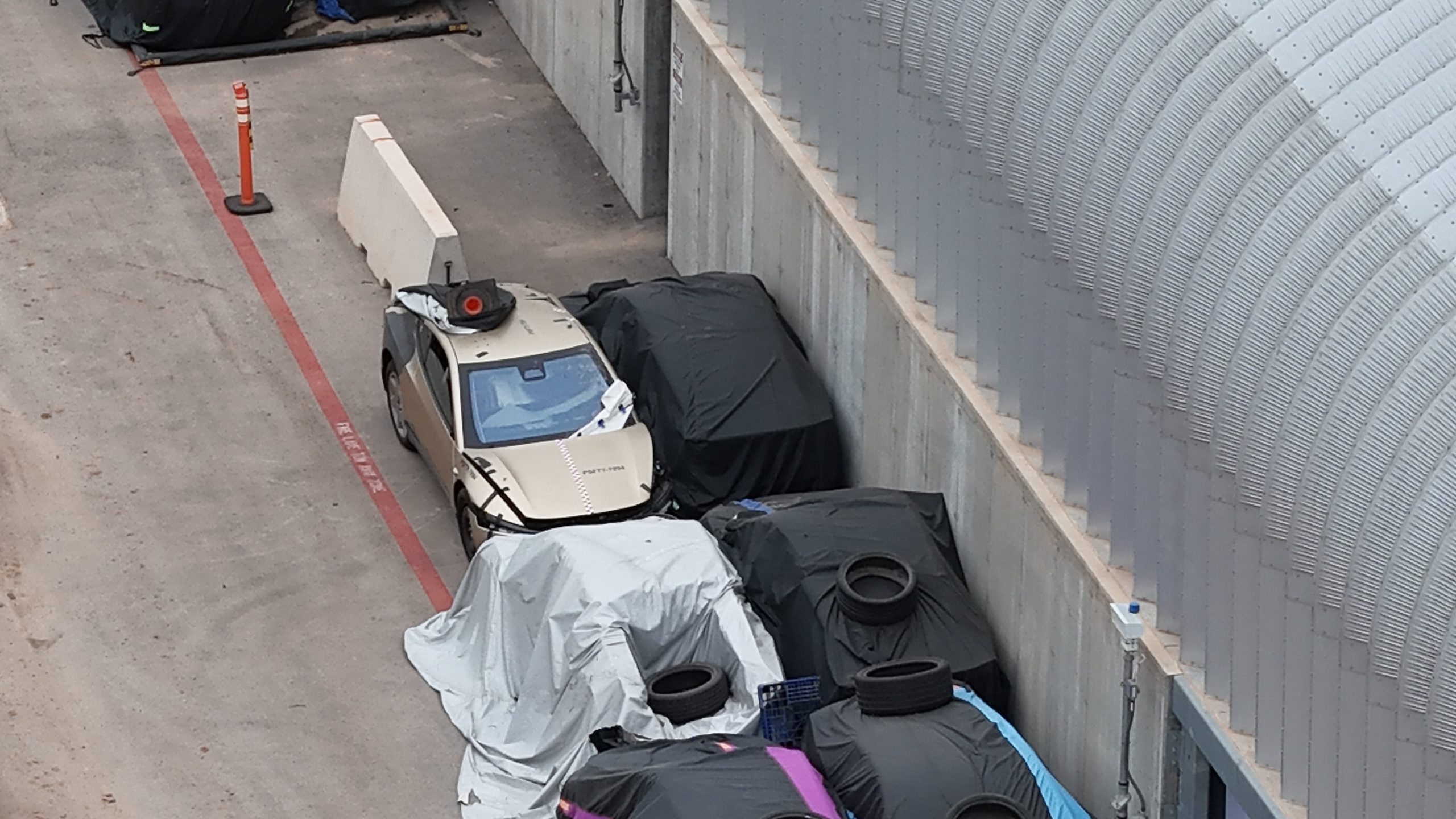
The Tesla Cybercab could very well be the safest taxi on the road when it is released and deployed for public use. This was, at least, hinted at by the intensive safety tests that Tesla seems to be putting the autonomous two-seater through at its Giga Texas crash test facility.
Intensive crash tests
As per recent images from longtime Giga Texas watcher and drone operator Joe Tegtmeyer, Tesla seems to be very busy crash testing Cybercab units. Images shared by the longtime watcher showed 16 Cybercab prototypes parked near Giga Texas’ dedicated crash test facility just before the holidays.
Tegtmeyer’s aerial photos showed the prototypes clustered outside the factory’s testing building. Some uncovered Cybercabs showed notable damage and one even had its airbags engaged. With Cybercab production expected to start in about 130 days, it appears that Tesla is very busy ensuring that its autonomous two-seater ends up becoming the safest taxi on public roads.
Prioritizing safety
With no human driver controls, the Cybercab demands exceptional active and passive safety systems to protect occupants in any scenario. Considering Tesla’s reputation, it is then understandable that the company seems to be sparing no expense in ensuring that the Cybercab is as safe as possible.
Tesla’s focus on safety was recently highlighted when the Cybertruck achieved a Top Safety Pick+ rating from the Insurance Institute for Highway Safety (IIHS). This was a notable victory for the Cybertruck as critics have long claimed that the vehicle will be one of, if not the, most unsafe truck on the road due to its appearance. The vehicle’s Top Safety Pick+ rating, if any, simply proved that Tesla never neglects to make its cars as safe as possible, and that definitely includes the Cybercab.
Elon Musk
Tesla’s Elon Musk gives timeframe for FSD’s release in UAE
Provided that Musk’s timeframe proves accurate, FSD would be able to start saturating the Middle East, starting with the UAE, next year.
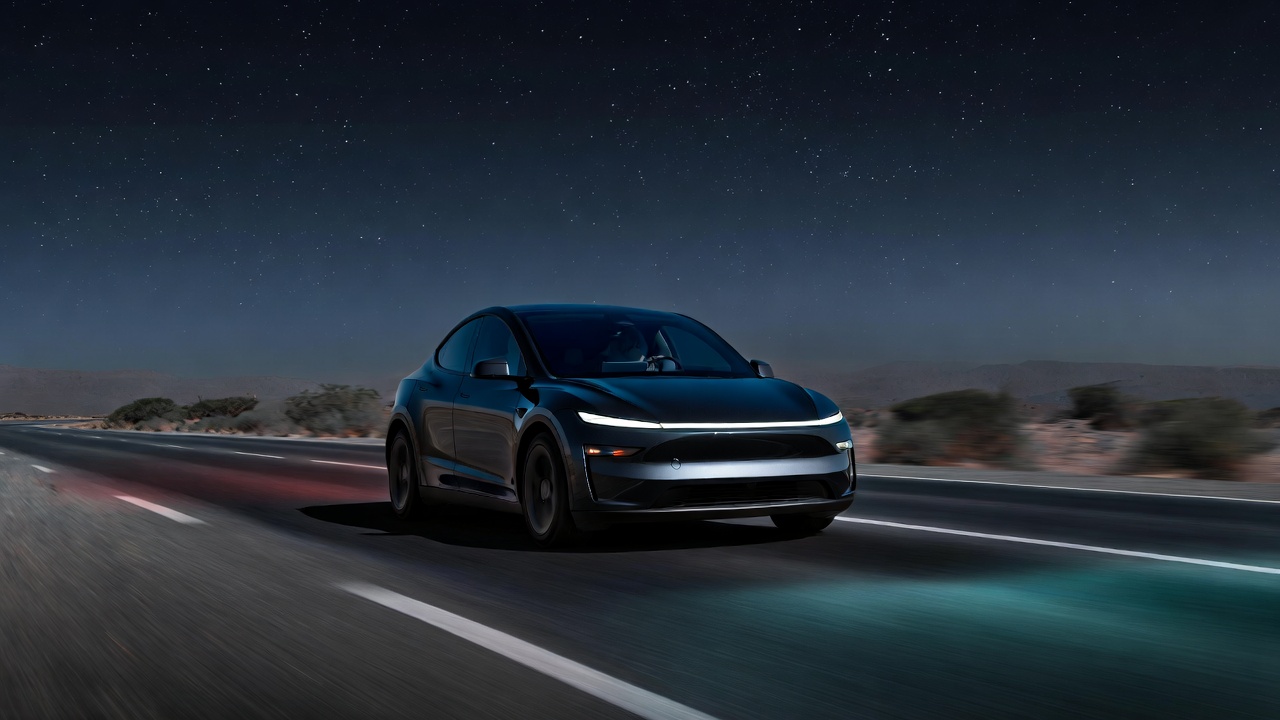
Tesla CEO Elon Musk stated on Monday that Full Self-Driving (Supervised) could launch in the United Arab Emirates (UAE) as soon as January 2026.
Provided that Musk’s timeframe proves accurate, FSD would be able to start saturating the Middle East, starting with the UAE, next year.
Musk’s estimate
In a post on X, UAE-based political analyst Ahmed Sharif Al Amiri asked Musk when FSD would arrive in the country, quoting an earlier post where the CEO encouraged users to try out FSD for themselves. Musk responded directly to the analyst’s inquiry.
“Hopefully, next month,” Musk wrote. The exchange attracted a lot of attention, with numerous X users sharing their excitement at the idea of FSD being brought to a new country. FSD (Supervised), after all, would likely allow hands-off highway driving, urban navigation, and parking under driver oversight in traffic-heavy cities such as Dubai and Abu Dhabi.
Musk’s comments about FSD’s arrival in the UAE were posted following his visit to the Middle Eastern country. Over the weekend, images were shared online of Musk meeting with UAE Defense Minister, Deputy Prime Minister, and Dubai Crown Prince HH Sheikh Hamdan bin Mohammed. Musk also posted a supportive message about the country, posting “UAE rocks!” on X.
FSD recognition
FSD has been getting quite a lot of support from foreign media outlets. FSD (Supervised) earned high marks from Germany’s largest car magazine, Auto Bild, during a test in Berlin’s challenging urban environment. The demonstration highlighted the system’s ability to handle dense traffic, construction sites, pedestrian crossings, and narrow streets with smooth, confident decision-making.
Journalist Robin Hornig was particularly struck by FSD’s superior perception and tireless attention, stating: “Tesla FSD Supervised sees more than I do. It doesn’t get distracted and never gets tired. I like to think I’m a good driver, but I can’t match this system’s all-around vision. It’s at its best when both work together: my experience and the Tesla’s constant attention.” Only one intervention was needed when the system misread a route, showcasing its maturity while relying on vision-only sensors and over-the-air learning.
News
Tesla quietly flexes FSD’s reliability amid Waymo blackout in San Francisco
“Tesla Robotaxis were unaffected by the SF power outage,” Musk wrote in his post.

Tesla highlighted its Full Self-Driving (Supervised) system’s robustness this week by sharing dashcam footage of a vehicle in FSD navigating pitch-black San Francisco streets during the city’s widespread power outage.
While Waymo’s robotaxis stalled and caused traffic jams, Tesla’s vision-only approach kept operating seamlessly without remote intervention. Elon Musk amplified the clip, highlighting the contrast between the two systems.
Tesla FSD handles total darkness
The @Tesla_AI account posted a video from a Model Y operating on FSD during San Francisco’s blackout. As could be seen in the video, streetlights, traffic signals, and surrounding illumination were completely out, but the vehicle drove confidently and cautiously, just like a proficient human driver.
Musk reposted the clip, adding context to reports of Waymo vehicles struggling in the same conditions. “Tesla Robotaxis were unaffected by the SF power outage,” Musk wrote in his post.
Musk and the Tesla AI team’s posts highlight the idea that FSD operates a lot like any experienced human driver. Since the system does not rely on a variety of sensors and a complicated symphony of factors, vehicles could technically navigate challenging circumstances as they emerge. This definitely seemed to be the case in San Francisco.
Waymo’s blackout struggles
Waymo faced scrutiny after multiple self-driving Jaguar I-PACE taxis stopped functioning during the blackout, blocking lanes, causing traffic jams, and requiring manual retrieval. Videos shared during the power outage showed fleets of Waymo vehicles just stopping in the middle of the road, seemingly confused about what to do when the lights go out.
In a comment, Waymo stated that its vehicles treat nonfunctional signals as four-way stops, but “the sheer scale of the outage led to instances where vehicles remained stationary longer than usual to confirm the state of the affected intersections. This contributed to traffic friction during the height of the congestion.”
A company spokesperson also shared some thoughts about the incidents. “Yesterday’s power outage was a widespread event that caused gridlock across San Francisco, with non-functioning traffic signals and transit disruptions. While the failure of the utility infrastructure was significant, we are committed to ensuring our technology adjusts to traffic flow during such events,” the Waymo spokesperson stated, adding that it is “focused on rapidly integrating the lessons learned from this event, and are committed to earning and maintaining the trust of the communities we serve every day.”








